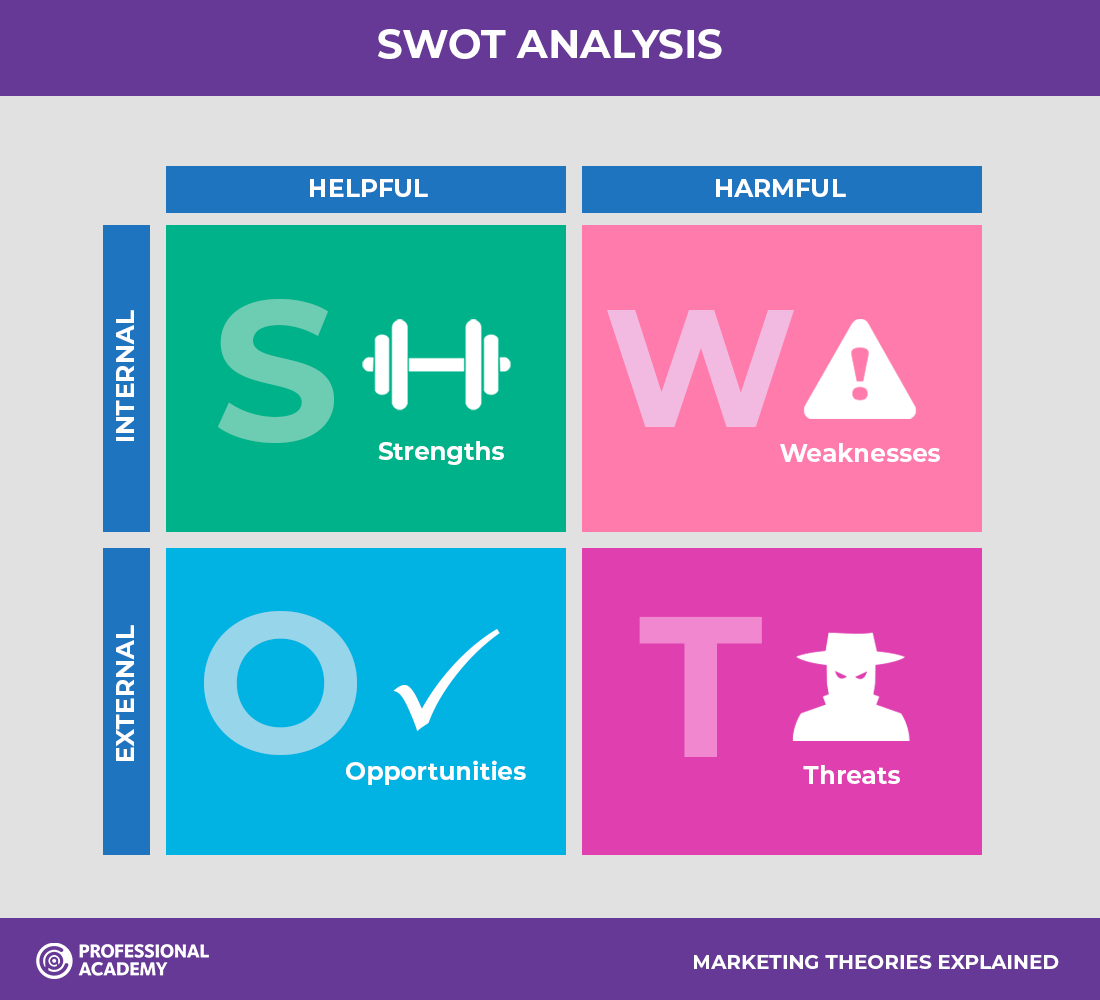

Visit our Marketing Theories Page to see more of our marketing buzzword busting blogs.
Welcome to our marketing theories series, each week we will be discussing one of the theories that we teach as part of our CIM courses. This week we will look at the tried and trusted SWOT analysis.
For those of you not familiar with this theory, SWOT stands for:

Many of you would have used a SWOT analysis in the past, but how many know who came up with the theory?
Albert Humphrey was an American business and management consultant.
During his work at the Stanford Research Institute (1960 – 1970), he produced a team method for planning which was named SOFT analysis, this has developed into what we now know as a SWOT analysis.
Enough history for now, if you want to find out more about Albert, visit his Wikipedia page.
The theory seems simple enough, you use it to evaluate the Strengths, Weaknesses, Opportunities and Threats that are involved in a marketing or business project. You will specify the objective for the project and then identify the internal and external factors that will have a positive as well as negative impact on the objective.
It is worth noting that you should set the final objective after completing the SWOT analysis. The reason for this is to ensure that the objectives are achievable and not unrealistic given the current internal and external environments.
Each organisation or business has to deal with both internal and external factors that affect them.
Users of the SWOT analysis can therefore use the first two sections (Strengths and Weaknesses) to help them identify all of the internal factors. The last two sections (Opportunities and Threats) will be used to identify all of the external factors.
When determining each of the sections it is really important that the right questions are asked. A SWOT analysis that does not produce or help towards producing realistic and achievable goals is useless. Have a look at the “sample” questions that you could ask for each section. These are just a short selection and will differ from objective to objective and from organisation to organisation. The important point to take away is that the right question will help to produce a really valuable SWOT analysis.
As mentioned before, the above list is not comprehensive. You can also turn a threat into an opportunity or something that is a weakness today might be turned into a strength with some effort.
Professional Academy's Marketing Theories Explained is a video series that explains marketing models in more detail. Watch the recording for the SWOT analysis to see CIM tutor, Professional Academy trainer and all-round marketing pro Peter Sumpton talk about the model and how it can be used in practice.
If you're more of a visual learner, check out this short animated video that outlines how to use the SWOT analysis.
The SWOT analysis is taught to students in the Certificate in Professional Marketing and is used in the Marketing module together with a PEST or PESTEL analysis to produce a comprehensive audit of the internal and external environment for an organisation which they will take into the exam.
In the next post we will cover the PESTEL or PEST analysis as this is most often used alongside a SWOT analysis.
If you want to learn more marketing theories and gain an industry recognised marketing qualification please download our prospectus for more information.
If you would like help referencing this blog, check out our Harvard Referencing Blog.